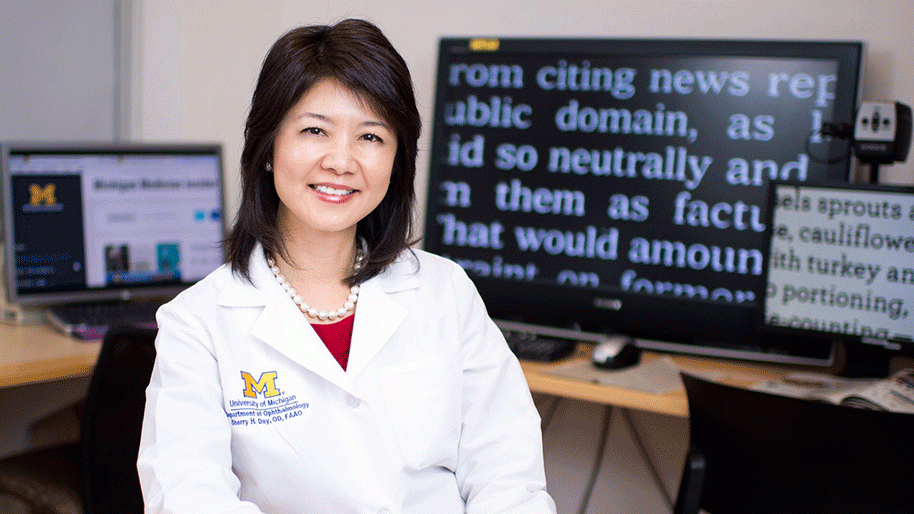Integrating medical, educational, and rehabilitative services in the treatment of low vision The Low Vision and Visual Rehabilitation Service at the U-M Kellogg Eye Center can help individuals with all levels of vision loss ranging from mild visual impairment to legal blindness. Our comprehensive, multi-disciplinary approach to care provides a team of specialists — from ophthalmologists to optometrists to occupational therapists —who are trained to evaluate your condition and identify an individualized rehabilitation plan to help you maximize remaining functional vision and maintain independence in daily living.
What is Low Vision?
Nearly 14 million Americans have low vision — a condition characterized by a level of vision that is 20/70 or worse and that cannot be fully corrected with medical treatment, surgery, or conventional glasses. Unlike total blindness, most individuals with low vision have some useful sight. But, as vision deteriorates, those affected often find it difficult to accomplish the tasks of everyday life — such as reading, recognizing faces, cooking, driving, and differentiating color. Low vision can occur at any stage in life, but it primarily affects the elderly. Most people develop low vision as a result of eye conditions and diseases, including macular degeneration, diabetic retinopathy, glaucoma, cataracts, retinitis pigmentosa, and stroke. Some causes of low vision, such as cataracts, are treatable and good vision can be restored. When diagnosed early, other conditions that lead to low vision, such as wet macular degeneration and glaucoma, can be halted or slowed — although vision lost is irreversible. You are legally blind when your best corrected central acuity is less than 20/200 (perfect visual acuity is 20/20) in your better eye, or your side vision is narrowed to 20 degrees or less in your better eye. People who are legally blind may still have some useful vision. If you are legally blind, you may qualify for certain government benefits. It is estimated that approximately 17 percent of people over the age of 65 are either blind or have low vision.
Make the Most of your Remaining Vision
At the Low Vision and Visual Rehabilitative Clinic, our team of health care professionals will work with you starting with a comprehensive examination designed to measure your remaining vision, and continuing with you to identify treatment options. To learn more about the services and resources available, please visit the links below:
- Low Vision Technology Center: Try innovative technologies and devices; all designed to help you make the most of your remaining vision
- Independent Living Skills Center: Learn about environmental modifications you can make to help maximize independence in your daily life
- Occupational Therapy and Rehabilitative Training Service: Work with our occupational therapist to develop skills and strategies to overcome the challenges of vision loss and restore independence to daily living
Patient Resources
- The Kellogg Eye Center has a number of publications available for our patients with low vision and their families.
- The Washtenaw Library for the Blind and Physically Disabled's online Resource Guide offers an alphabetical listing of businesses and agencies providing products and services to individuals with vision loss, including subject index.
Make an Appointment
To learn more about how we can help with vision impairment, please contact the Low Vision and Visual Rehabilitation Service at 734-764-4190.

